Teaching my daughter to cook has been one of the most chaotic—and magical—experiences of my life. Watching her tiny hands crack eggs, measure flour, and sneak bites of cookie dough brings me back to when I first fell in love with the kitchen.
Sure, sometimes the kitchen looks like a tornado blew through it, but the memories (and the giggles) are worth every sticky mess.
If you’re looking for ways to spark that same joy, here are 15 fun kitchen skills you’ll love teaching your kids.
1. Washing Fruits And Vegetables

A splash of water and a handful of fruits can turn into a fun activity. Kids love playing with water and this is a great way to teach them. Show them how to gently scrub apples or rinse leafy greens.
Feel the crisp textures and smell the fresh aroma. It’s important to teach them about cleanliness and health. This simple task helps them understand the importance of washing away dirt and germs.
2. Stirring And Mixing Ingredients

Imagine the joy of swirling a spoon in a big bowl of colorful batter. Mixing ingredients not only helps in making delicious dishes but also strengthens motor skills. Let them feel the textures, from smooth to chunky. Encourage them to experiment with different combinations. It’s not just about mixing, it’s about discovering flavors and textures. Every stir is a step closer to a tasty creation.
3. Cracking Eggs Without Shells
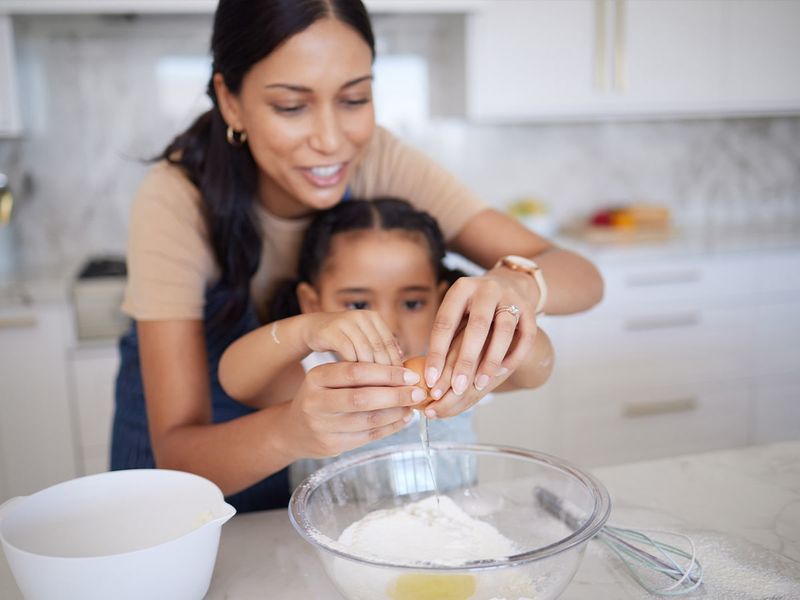
Cracking an egg cleanly is a skill that even adults admire. The satisfying crack followed by the smooth fall of the yolk is a mini triumph. Guide their little hands and watch their confidence soar.
Teach them to tap gently on a flat surface and pull apart slowly. It’s a perfect blend of focus and fun, as children eagerly watch their attempt to create a shell-free masterpiece.
4. Measuring Dry And Wet Ingredients
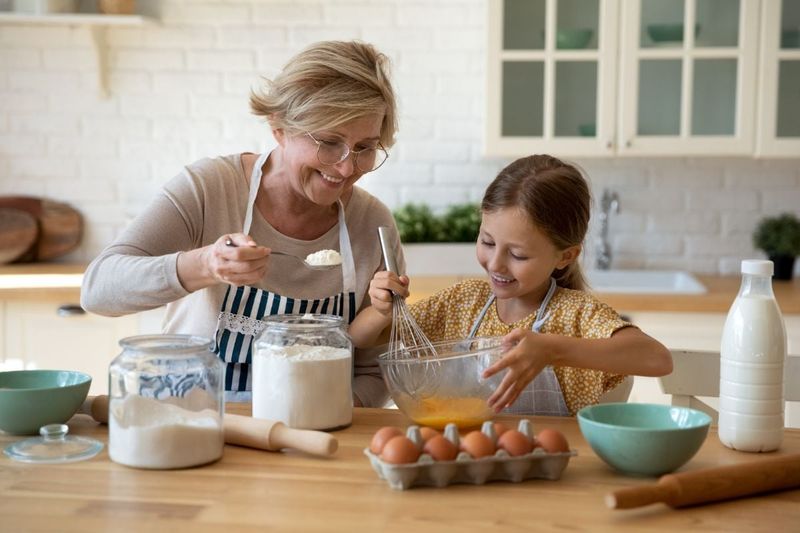
Precision can turn a simple dish into a culinary delight. Measuring ingredients is like playing a game of numbers. Let them scoop flour or pour milk, observing each level.
It’s a lesson in balance and math, understanding quantities and their impact on recipes. As they measure, they learn to appreciate the art of cooking, blending science with creativity.
5. Using A Whisk Like A Pro
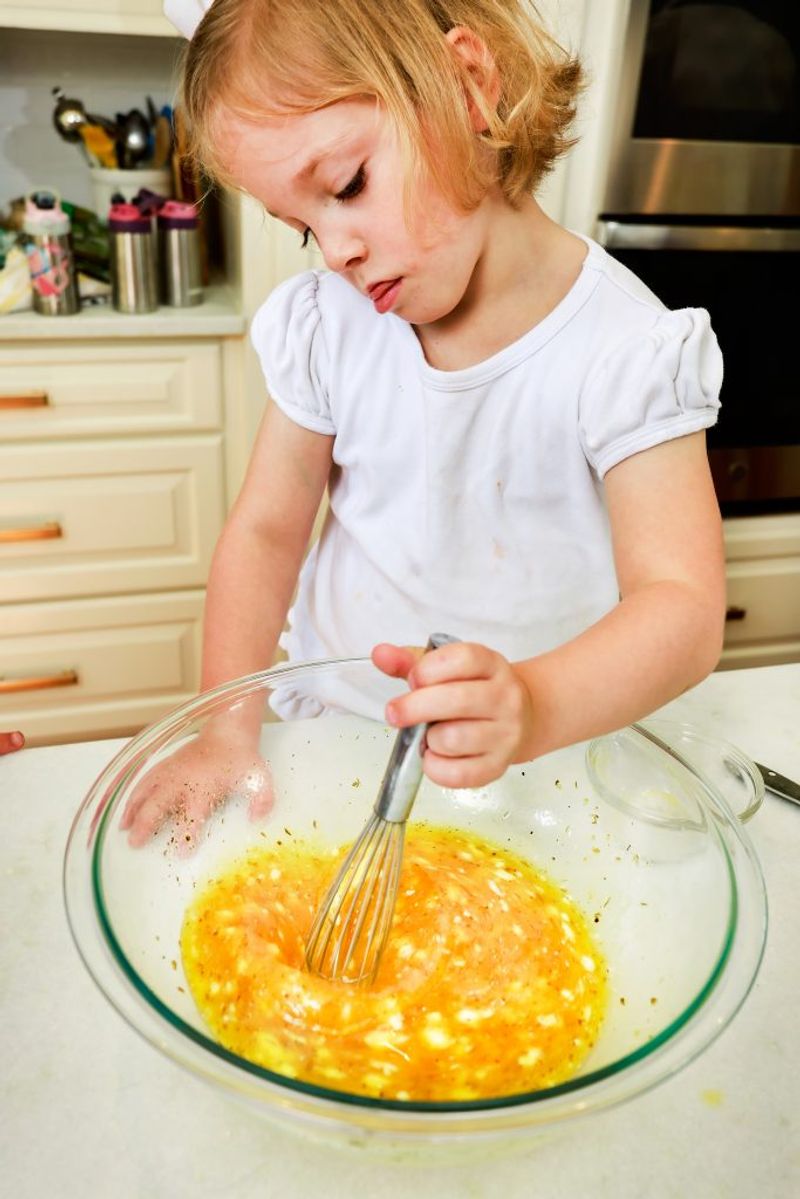
A whisk is like a magic wand that turns simple ingredients into something fluffy and delightful. Show them the circular motion, feeling the resistance and the eventual blend.
Allow them to experiment with speed, from gentle swirls to fast whisks. It’s all about rhythm and fun, transforming simple mixtures into creamy wonders.
6. Spreading Butter Or Jam Evenly
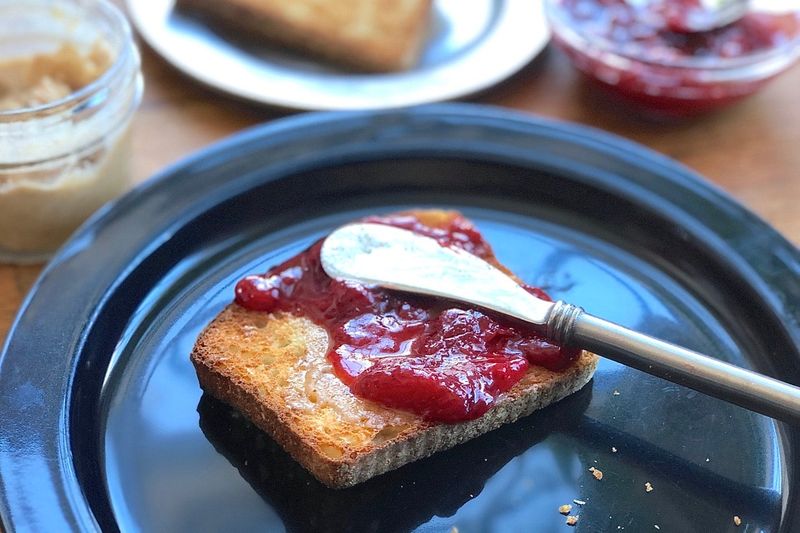
Spreading butter or jam can be surprisingly satisfying. It’s about learning gentle pressure and even distribution. Guide their hands, watching them master the art of a smooth spread.
They learn to appreciate textures and flavors. With each swipe of the knife, they gain confidence and enjoy the simple pleasure of creating their own snack.
7. Peeling Vegetables With A Safe Peeler
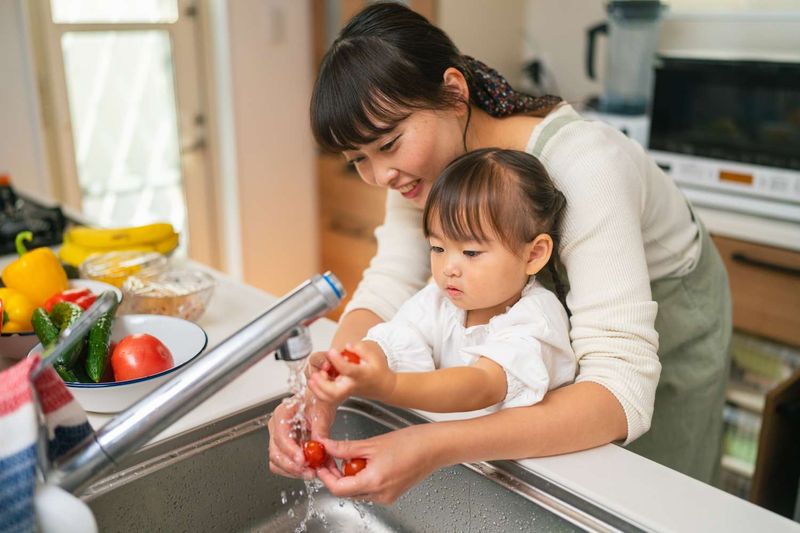
Peeling vegetables is like uncovering hidden treasures. Introduce them to a safe peeler and let them feel the satisfaction of a clean peel. It’s a great way to teach safety and responsibility in the kitchen.
As they peel, they learn about different textures and thicknesses. A wonderful exercise in patience and precision, watching a carrot transform under their hands.
8. Rolling Out Dough For Cookies or Pizza
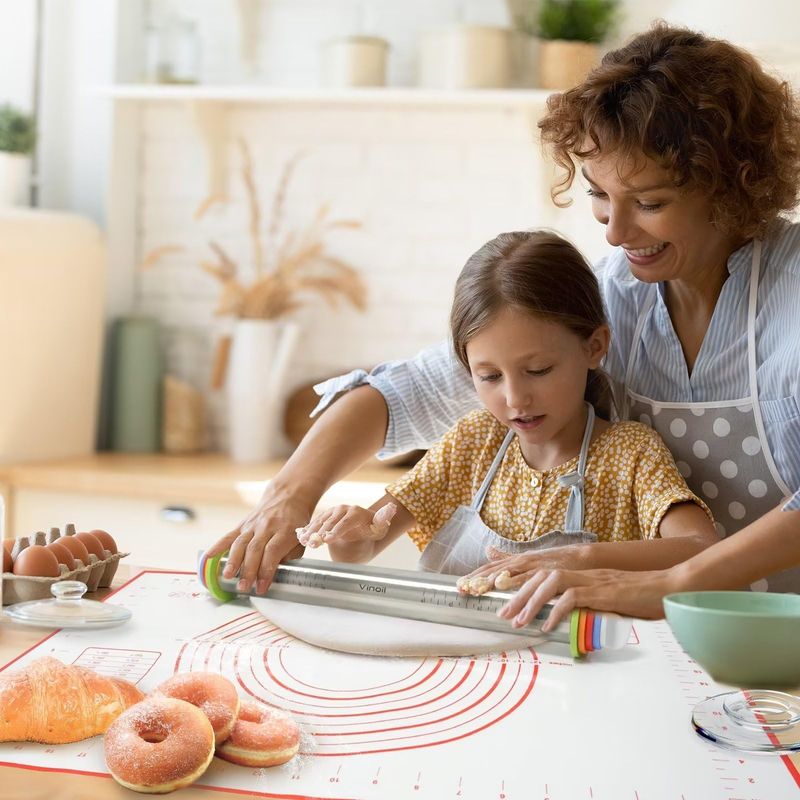
It is an invitation to play. Kids love the tactile experience of flattening and shaping. Teach them to sprinkle flour, preventing stickiness, and guide the rolling pin’s pressure.
It’s a creative activity that encourages imagination. They can make cookies or pizzas, shaping their culinary creations.
9. Using Cookie Cutters For Fun Shapes
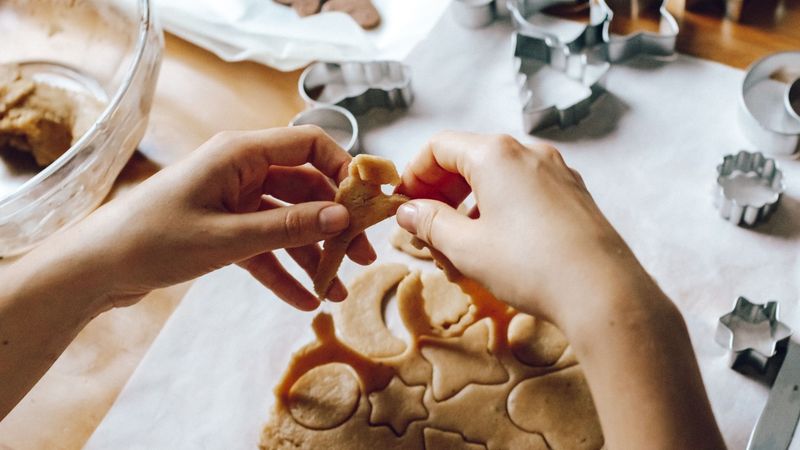
Turning dough into fun shapes is like crafting edible art. Hand them cookie cutters and watch their creativity unfold. They learn precision and choice, selecting shapes and pressing down.
This task enhances hand-eye coordination and spatial awareness. As they pop out stars or hearts, they experience the joy of personalizing their snacks.
10. Setting the Table With Care

This one can be a delightful ritual. Teach them how to place plates, arrange cutlery, and fold napkins. It’s an exercise in organization and aesthetics, creating a welcoming atmosphere.
As they arrange, they learn about balance and symmetry. It is a wonderful way to contribute to family meals, turning a chore into a creative task. The result is a beautifully set table, ready to host delicious feasts and warm conversations.
11. Cutting Soft Foods With A Kid-Safe Knife
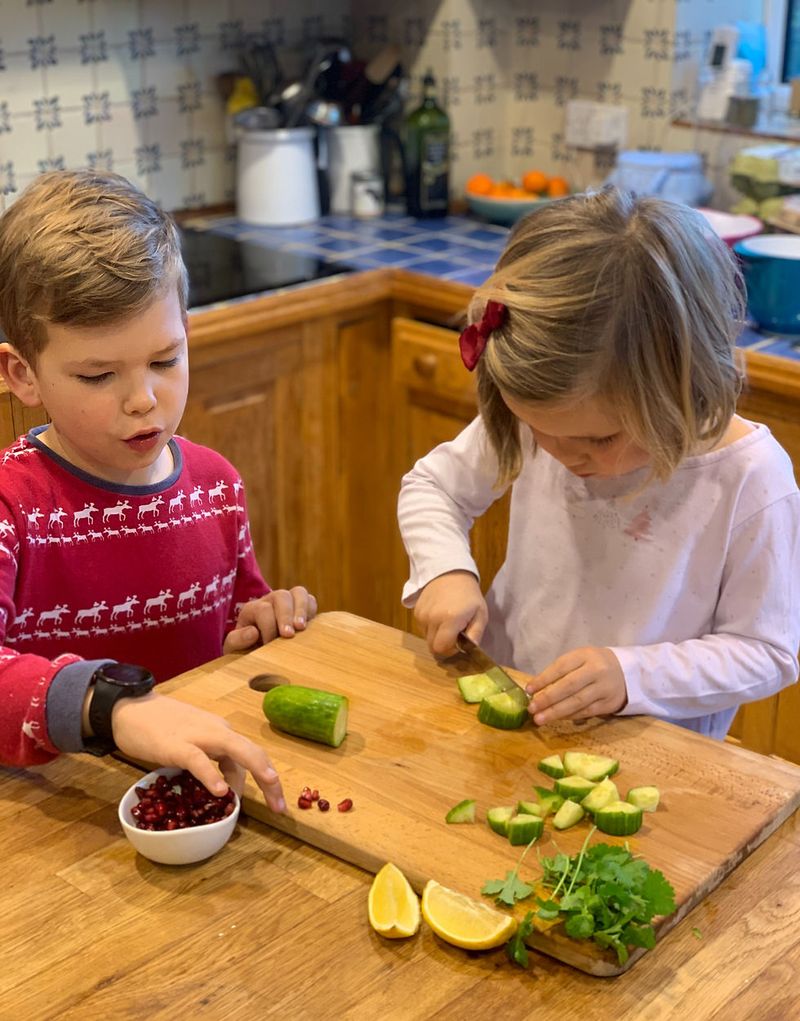
Handling a knife safely is a valuable skill. Start with a kid-safe knife and soft foods like bananas or cheese. Guide their hands, teaching them to slice gently and evenly.
This task builds confidence and understanding of kitchen safety. It will be a lesson in patience and control, transforming soft ingredients into perfect slices.
12. Assembling Sandwiches And Wraps
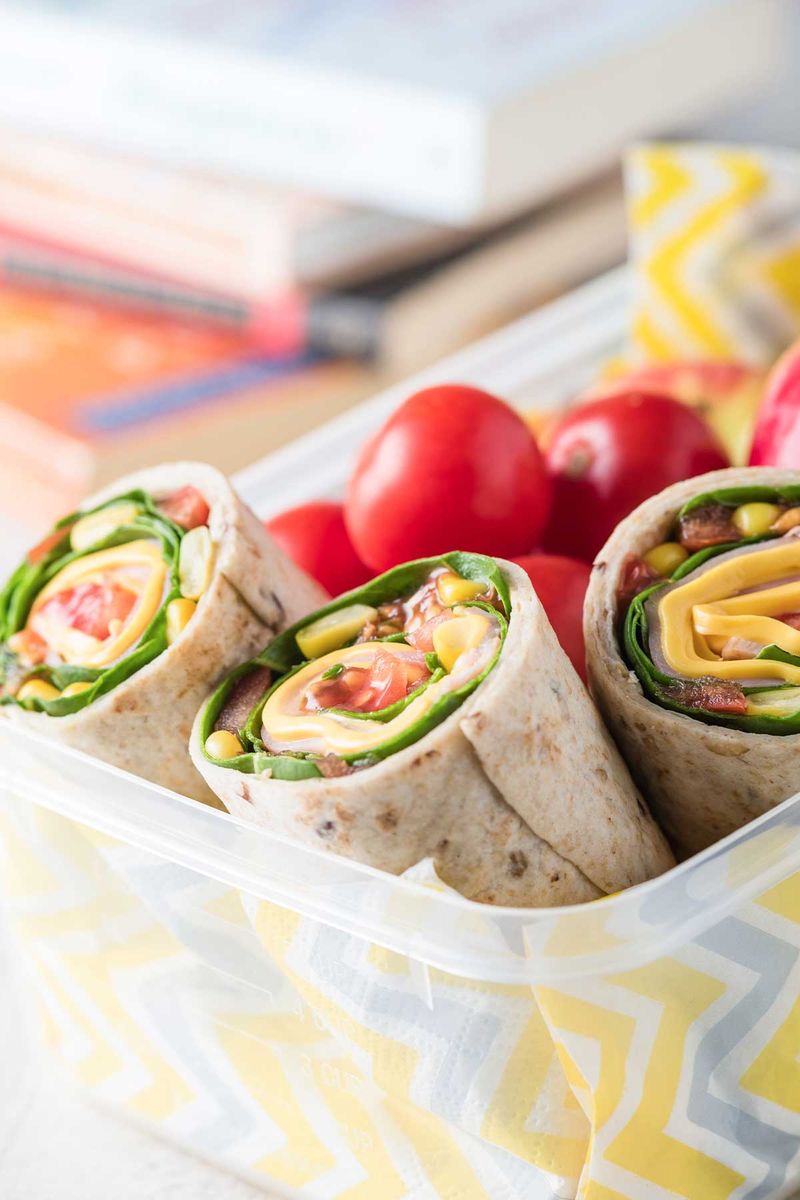
Assembling sandwiches is like creating edible masterpieces. Let them choose ingredients, exploring textures and flavors. Encourage them to layer creatively and wrap tightly. This activity fosters decision-making and creativity, as they experiment with combinations.
It’s a hands-on way to learn about nutrition and balance. Each sandwich becomes a personalized creation, a blend of taste and imagination.
13. Making A Simple Salad
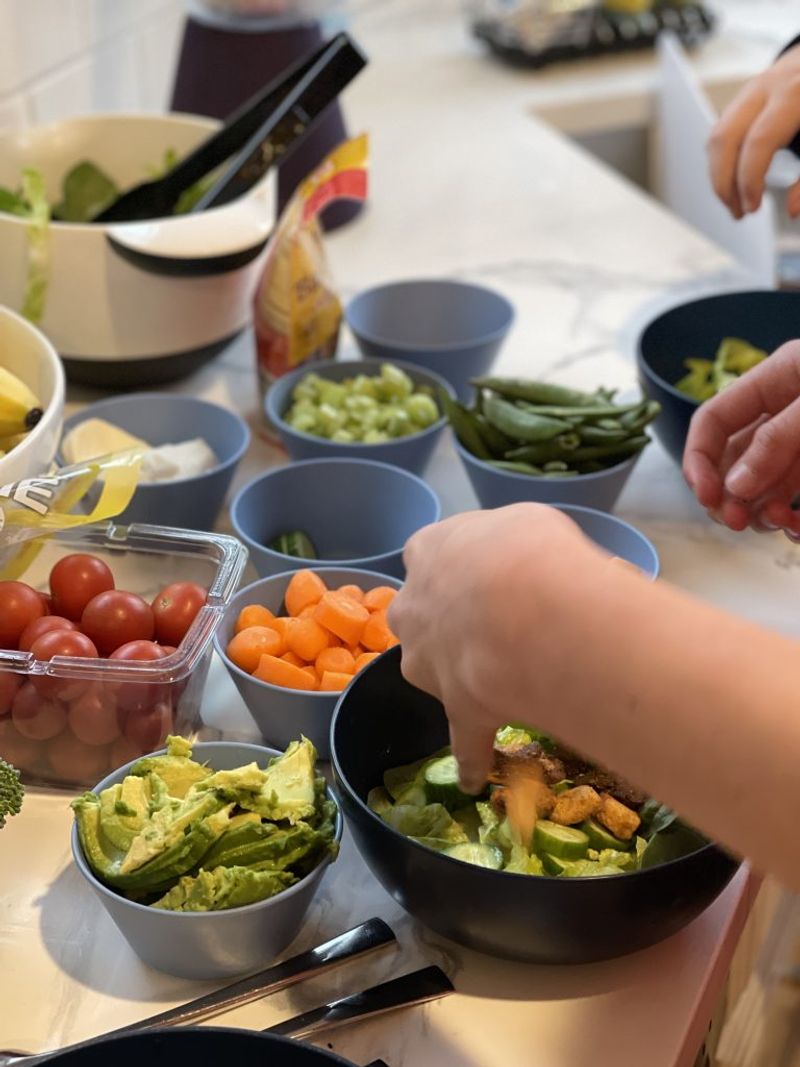
Creating a salad is an exploration of colors and flavors. Guide them to chop, tear, and toss ingredients. This activity teaches about healthy eating and the joy of fresh produce.
They learn to appreciate the crunch and aroma of vegetables. They will feel the satisfaction of making something nutritious and delicious.
14. Pouring And Serving Drinks Carefully

Pouring drinks with care is a skill that blends concentration and precision. Teach them to hold the pitcher steady and aim carefully.
Encourage them to serve drinks to family members, fostering a sense of responsibility. The result is a refreshing drink, perfectly served, ready to complement any meal.
15. Cleaning Up The Kitchen Together

Cleaning up can be a fun and rewarding activity. Make it a team effort, teaching them to wipe counters and tidy up.
They learn to appreciate the importance of maintaining a neat environment. A wonderful way to end a cooking session, leaving the kitchen sparkling and ready for the next culinary adventure.

